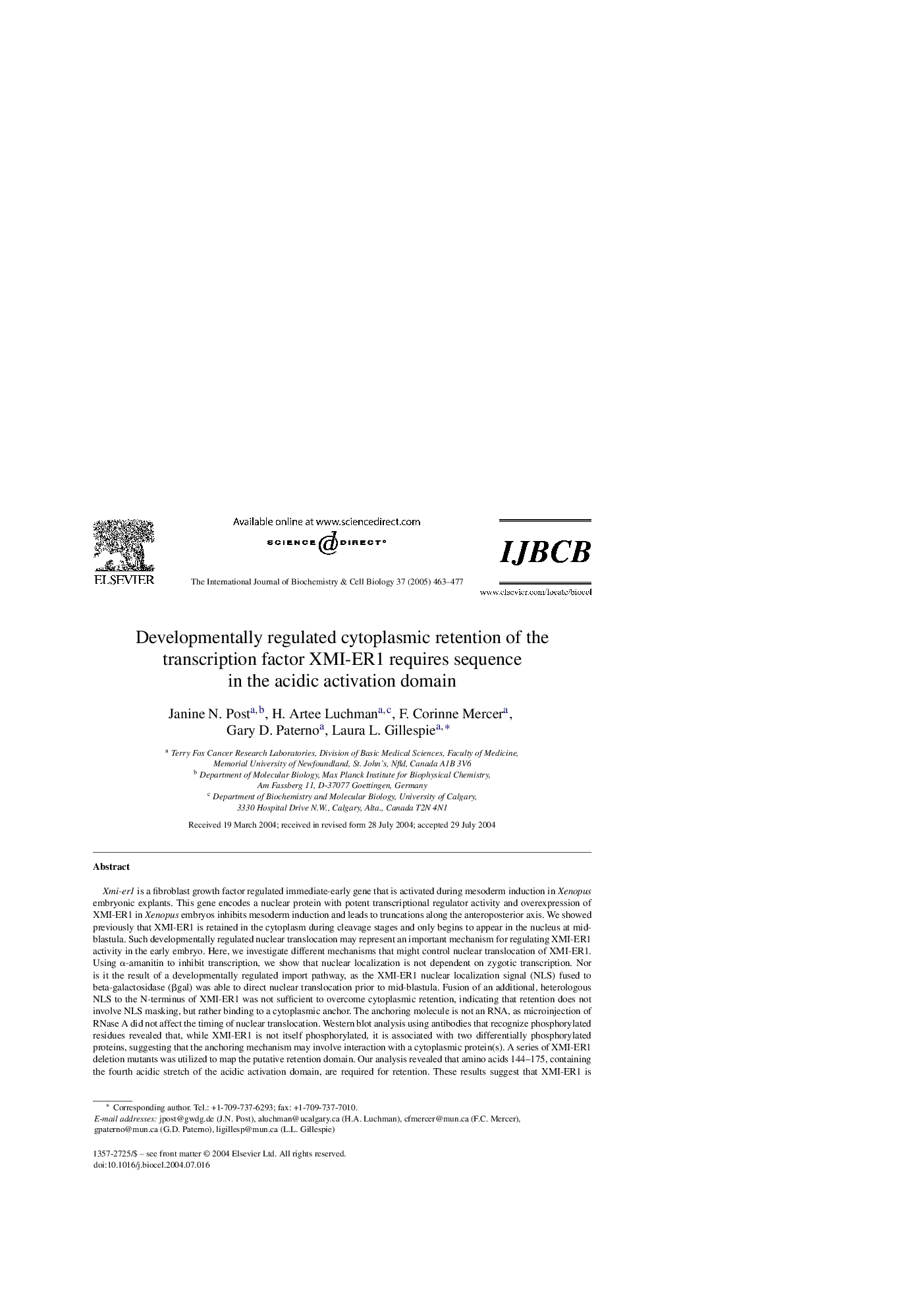| کد مقاله | کد نشریه | سال انتشار | مقاله انگلیسی | نسخه تمام متن |
|---|---|---|---|---|
| 9890113 | 1540001 | 2005 | 15 صفحه PDF | دانلود رایگان |
عنوان انگلیسی مقاله ISI
Developmentally regulated cytoplasmic retention of the transcription factor XMI-ER1 requires sequence in the acidic activation domain
دانلود مقاله + سفارش ترجمه
دانلود مقاله ISI انگلیسی
رایگان برای ایرانیان
کلمات کلیدی
موضوعات مرتبط
علوم زیستی و بیوفناوری
بیوشیمی، ژنتیک و زیست شناسی مولکولی
زیست شیمی
پیش نمایش صفحه اول مقاله

چکیده انگلیسی
Xmi-er1 is a fibroblast growth factor regulated immediate-early gene that is activated during mesoderm induction in Xenopus embryonic explants. This gene encodes a nuclear protein with potent transcriptional regulator activity and overexpression of XMI-ER1 in Xenopus embryos inhibits mesoderm induction and leads to truncations along the anteroposterior axis. We showed previously that XMI-ER1 is retained in the cytoplasm during cleavage stages and only begins to appear in the nucleus at mid-blastula. Such developmentally regulated nuclear translocation may represent an important mechanism for regulating XMI-ER1 activity in the early embryo. Here, we investigate different mechanisms that might control nuclear translocation of XMI-ER1. Using α-amanitin to inhibit transcription, we show that nuclear localization is not dependent on zygotic transcription. Nor is it the result of a developmentally regulated import pathway, as the XMI-ER1 nuclear localization signal (NLS) fused to beta-galactosidase (βgal) was able to direct nuclear translocation prior to mid-blastula. Fusion of an additional, heterologous NLS to the N-terminus of XMI-ER1 was not sufficient to overcome cytoplasmic retention, indicating that retention does not involve NLS masking, but rather binding to a cytoplasmic anchor. The anchoring molecule is not an RNA, as microinjection of RNase A did not affect the timing of nuclear translocation. Western blot analysis using antibodies that recognize phosphorylated residues revealed that, while XMI-ER1 is not itself phosphorylated, it is associated with two differentially phosphorylated proteins, suggesting that the anchoring mechanism may involve interaction with a cytoplasmic protein(s). A series of XMI-ER1 deletion mutants was utilized to map the putative retention domain. Our analysis revealed that amino acids 144-175, containing the fourth acidic stretch of the acidic activation domain, are required for retention. These results suggest that XMI-ER1 is retained in the cytoplasm of the early embryo by interaction of the region containing amino acids 144-175 with a cytoplasmic anchor.
ناشر
Database: Elsevier - ScienceDirect (ساینس دایرکت)
Journal: The International Journal of Biochemistry & Cell Biology - Volume 37, Issue 2, February 2005, Pages 463-477
Journal: The International Journal of Biochemistry & Cell Biology - Volume 37, Issue 2, February 2005, Pages 463-477
نویسندگان
Janine N. Post, H. Artee Luchman, F. Corinne Mercer, Gary D. Paterno, Laura L. Gillespie,